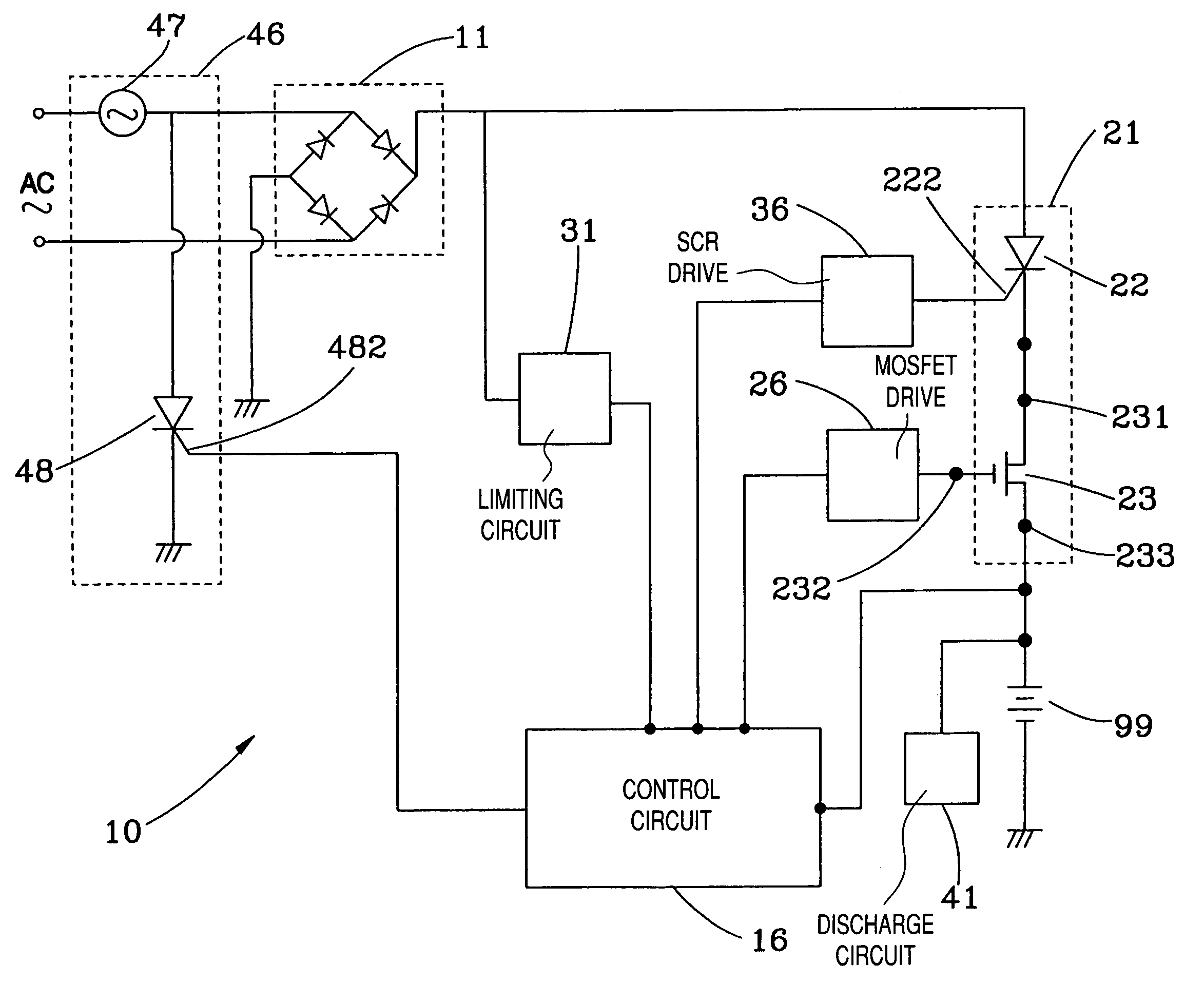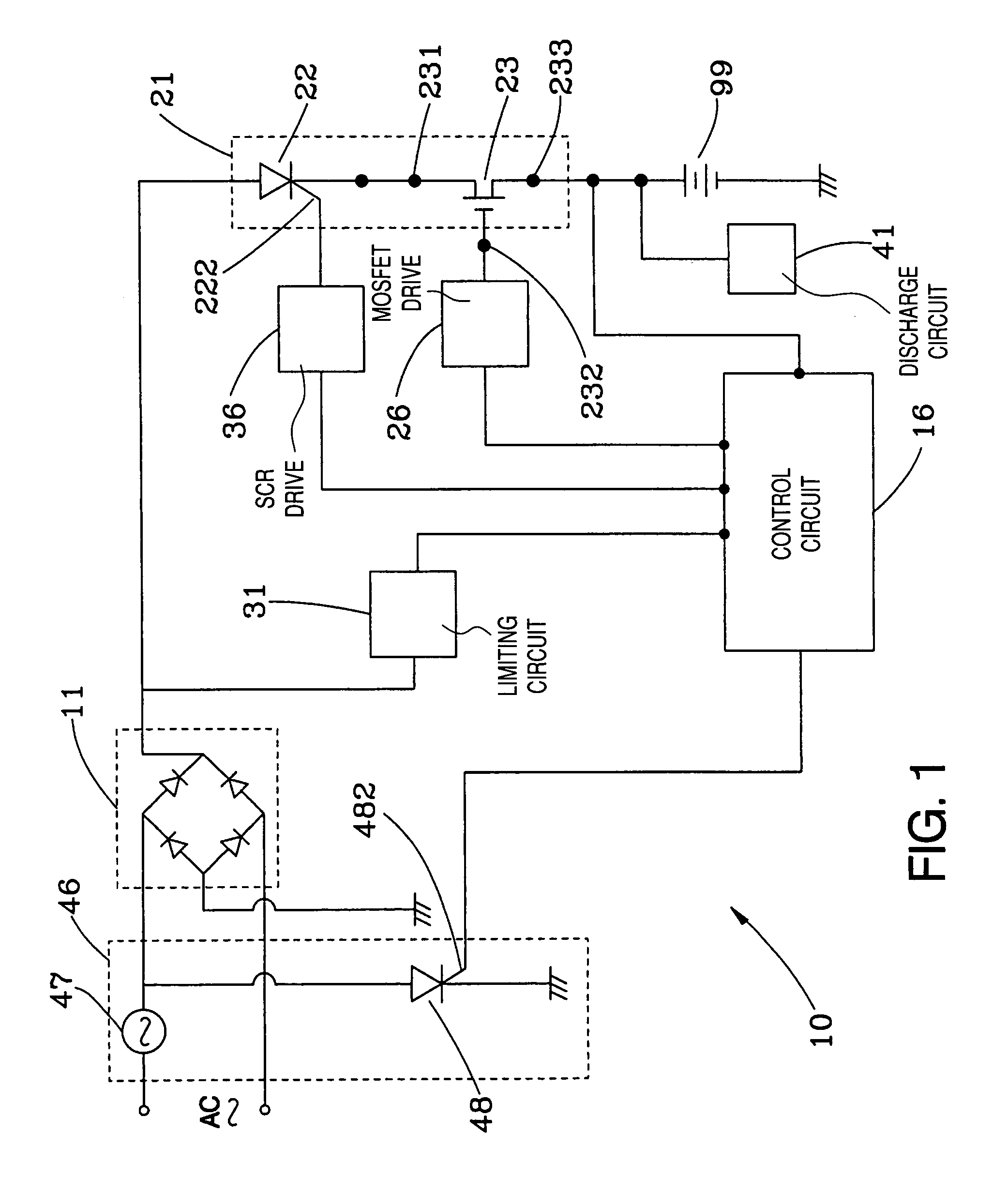Battery charging and/or DC power supply circuitry
- Summary
- Abstract
- Description
- Claims
- Application Information
AI Technical Summary
Benefits of technology
Problems solved by technology
Method used
Image
Examples
Embodiment Construction
[0017]Referring to FIGS. 1–2, a battery charging and / or DC power supply circuitry 10 constructed according to a first preferred embodiment of the present invention is comprised of a rectifier unit 11, a control circuit 16, a semiconductor switch unit 21, an MOS switch drive circuit 26, a level-limiting circuit 31, an SCR drive circuit 36, a discharging circuit 41, and a protection circuit 46.
[0018]The rectifier unit 11 is a bridging rectifier in this embodiment and electrically connected with an AC power source (not shown) for rectifying a positive full wave of the AC power source (not shown) to a plurality of positive half waves.
[0019]The control circuit 16 includes a microprocessor, which is a programmable single chip, for predetermined calculation and control.
[0020]The semiconductor switch unit 21 includes a first SCR 22 serially connected with an input terminal 231 of an MOS switch 23, which is a P channel metal-oxide-semiconductor field-effect transistor (MOSFET) or a bipolar p...
PUM
 Login to View More
Login to View More Abstract
Description
Claims
Application Information
 Login to View More
Login to View More - R&D
- Intellectual Property
- Life Sciences
- Materials
- Tech Scout
- Unparalleled Data Quality
- Higher Quality Content
- 60% Fewer Hallucinations
Browse by: Latest US Patents, China's latest patents, Technical Efficacy Thesaurus, Application Domain, Technology Topic, Popular Technical Reports.
© 2025 PatSnap. All rights reserved.Legal|Privacy policy|Modern Slavery Act Transparency Statement|Sitemap|About US| Contact US: help@patsnap.com



